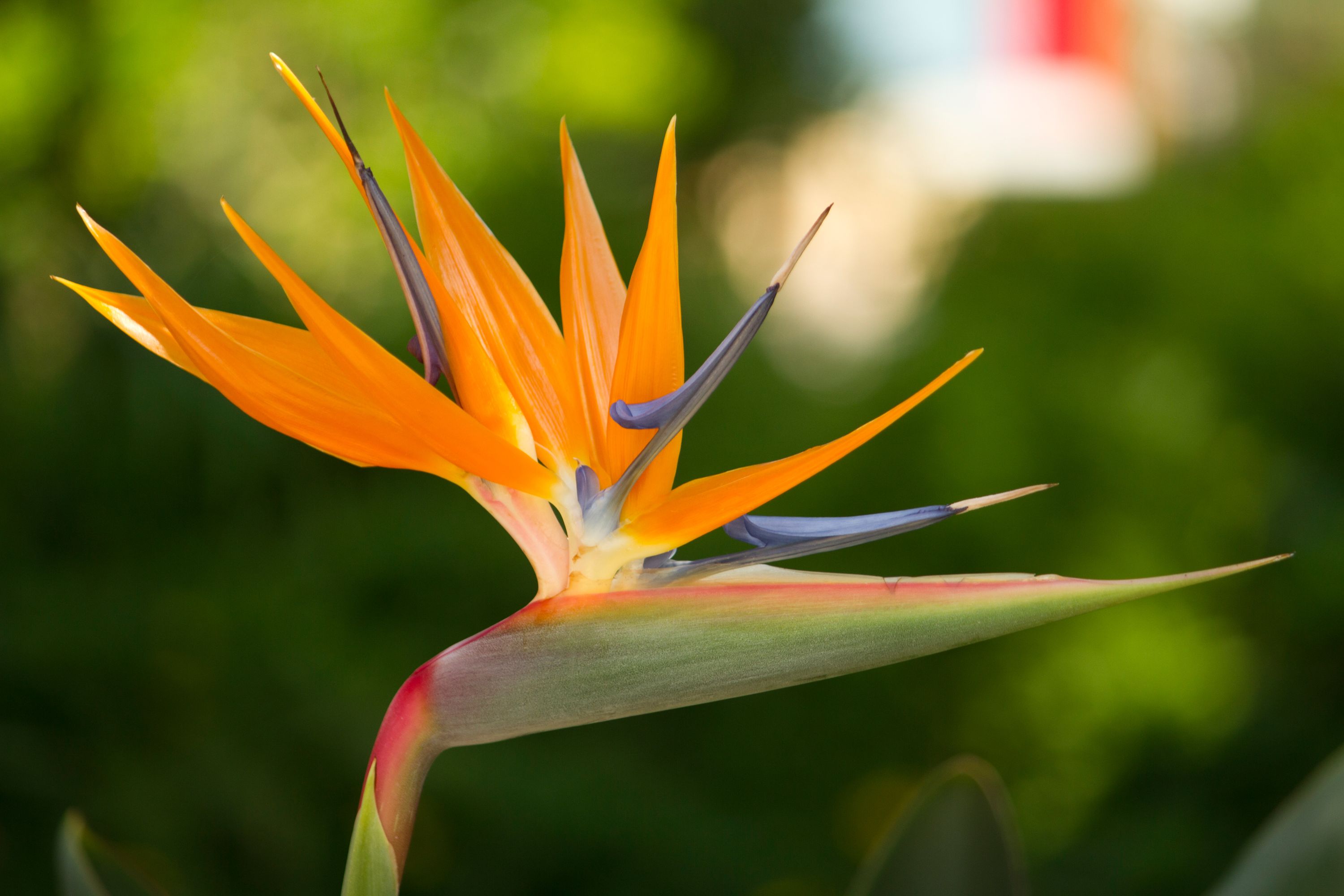Bird of Paradise
(Strelitzia reginae)

Description
Strelitzia reginae, commonly known as the Bird of Paradise plant, is a stunning tropical plant native to South Africa. Its vibrant orange and blue flowers are reminiscent of tropical birds, hence its common name. This plant is a popular choice among gardeners and plant enthusiasts for its unique beauty and ease of care. In this article, we will dive deeper into the world of Strelitzia reginae, exploring its botanical characteristics, cultivation, and care requirements. Taxonomy: Strelitzia reginae belongs to the family Strelitziaceae, which includes five species in total. This family is part of the order Zingiberales, which also includes ginger, banana, and heliconia plants. The genus Strelitzia was named in honor of Queen Charlotte of Mecklenburg-Strelitz, the wife of King George III of England, who was an avid botanist. Botanical Characteristics: Strelitzia reginae is a clump-forming, evergreen perennial that can grow up to 1.5 meters tall and 2.5 meters wide. Its leaves are long and paddle-shaped, growing up to 1 meter in length and 30 centimeters in width. The leaves are arranged in a fan-like pattern, giving the plant a distinct tropical appearance. The plant's flowers emerge on long stalks, growing up to 1 meter tall. The flowers are composed of three bright orange sepals and three blue petals, forming an exotic and beautiful bird-like shape. Cultivation: Strelitzia reginae is a relatively easy plant to grow and care for, making it a popular choice among gardeners and plant enthusiasts. It prefers well-draining soil that is rich in organic matter and is tolerant of a wide range of soil pH levels. The plant requires full sun to partial shade, with at least 6 hours of direct sunlight per day. Propagation: Strelitzia reginae can be propagated through division or seed. Division is the easiest and most common method of propagation. To propagate through division, separate the plant's rhizomes in the early spring, making sure each division has several healthy shoots and roots. Plant the divisions in a pot filled with well-draining soil and water thoroughly. Seeds can also be used to propagate Strelitzia reginae, but it is a more challenging process. The seeds have a hard outer shell that needs to be scarified or soaked in warm water for a few days before planting. Once the seeds are ready, plant them in a pot filled with well-draining soil and keep them moist. Care: Strelitzia reginae requires moderate watering, with the soil kept moist but not waterlogged. During the growing season, water the plant once a week and reduce watering in the winter months. The plant prefers high humidity, so it is beneficial to mist the leaves regularly or place the plant on a tray of pebbles filled with water. Fertilizer: Strelitzia reginae is a heavy feeder and requires regular fertilization during the growing season. Fertilize the plant every two weeks with a balanced fertilizer, reducing the frequency during the winter months. Over-fertilization can lead to leaf burn, so it is essential to follow the manufacturer's instructions carefully. Pests and Diseases: Strelitzia reginae is generally a hardy plant and is not prone to many pests and diseases. However, it can still be affected by some common issues that gardeners and plant enthusiasts should be aware of. Pests: Mealybugs: Mealybugs are small, soft-bodied insects that feed on the plant's sap, causing stunted growth and yellowing of the leaves. They are easily visible as they leave a white, cotton-like residue on the plant. Scale insects: Scale insects are small, oval-shaped insects that attach themselves to the plant and feed on its sap. They can cause leaf yellowing, stunted growth, and leaf drop. Spider mites: Spider mites are tiny, eight-legged pests that feed on the plant's leaves and cause a stippled appearance. They are common in hot and dry conditions. Diseases: Root rot: Root rot is a fungal disease caused by overwatering and poorly draining soil. The plant's roots will start to rot, and the leaves will turn yellow and wilt. Leaf spot: Leaf spot is a fungal disease that causes small, circular spots on the plant's leaves. These spots can merge and cause the leaves to drop prematurely. Bacterial blight: Bacterial blight is a bacterial disease that causes yellowing and wilting of the leaves. It is caused by overwatering and poor air circulation. Prevention and Treatment: Preventing pests and diseases is always better than treating them. Maintaining proper cultural practices like well-draining soil, proper watering, and good air circulation can help prevent many problems. If pests or diseases do occur, the affected parts of the plant should be removed and destroyed to prevent further spread. Pesticides and fungicides can be used to control the infestation, but it's important to use them judiciously and follow the manufacturer's instructions. Organic remedies like neem oil and insecticidal soap can also be effective in controlling pests.
Taxonomic tree:







